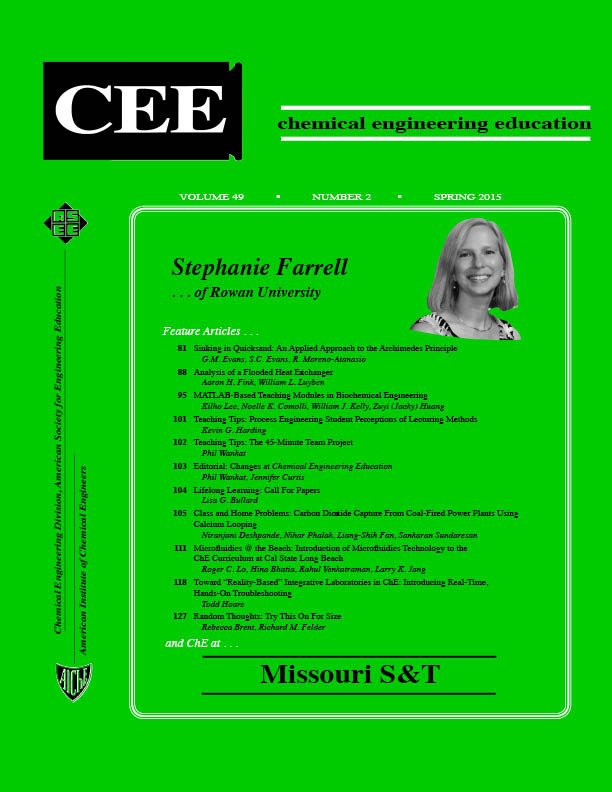MATLAB-Based Teaching Modules in Biochemical Engineering
Abstract
Mathematical models play an important role in biochemical engineering. For example, the models developed in the field of systems biology have been used to identify drug targets to treat pathogens such as Pseudomonas aeruginosa in biofilms. In addition, competitive binding models for chromatography processes have been developed to predict expanded bed breakthrough of a recombinant protein expressed in a high cell density fermentation. Numerical computing tools such as MATLAB can facilitate the development of these models in biochemical engineering. Compared to other computational tools and programming languages, such as C++ and Java, MATLAB is easier for students to learn since it has a large library of functions and toolboxes, including some developed in systems biology. Basic MATLAB modeling techniques have been introduced in advanced engineering courses to enhance student learning experiences. However, a nationwide survey conducted by Villanova University showed that only 28.5% of schools in United States provide training in MATLAB in graduate-level courses in biochemical engineering. Instructors in this survey also indicated they would have a strong interest in using MATLAB modules, if the modules were readily available, in courses such as systems biology. To address the need for MATLAB education in biochemical engineering, Villanova University has developed MATLAB modules and integrated them in the course CHE8663 Systems Biology (Fall semester 2012 & 2013). The teaching modules as well as the teaching strategies for MATLAB are provided here for a course that was offered to in class students as well as distance-learning (i.e., e-learning) students.


